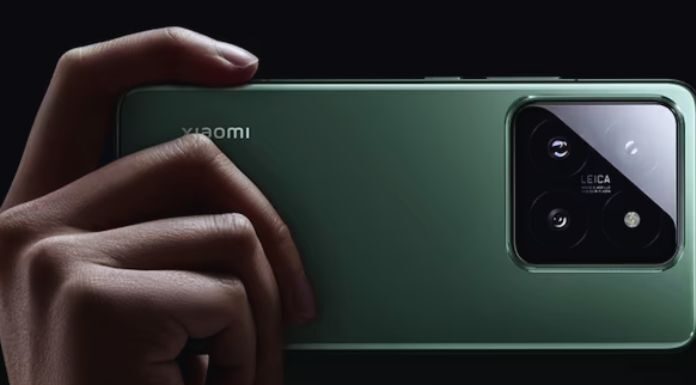The company has, at long last, formally reported the new models of the Xiaomi 14 series, the first to utilize the new Snapdragon 8 Gen 3 chip. After many reports throughout recent months, the Chinese organization has at long last disclosed the new Xiaomi 14 and Xiaomi 14 Ace at home, which replace the Xiaomi 13 and Xiaomi 13 Star. These are the first cell phones to utilize the new Qualcomm Snapdragon 8 Gen 3 chip.
Xiaomi 14
The Xiaomi 14 features a 6.36-inch TCL C8 LTPO flat OLED panel with a 1.5K resolution, a maximum brightness of 3000 nits, a refresh rate of 1 to 120 Hz, ultra-thin 1.61 mm bezels (except the lower 1.71 mm one), and a screen-to-body ratio of 93.3%. On the planning side, the cell phone embraces a level side edge with adjusted corners and a width of only 71.5 mm for agreeable one-gave use. The pink colorway utilizes a calfskin-like material with a delicate and sensitive touch, while the other colorways include a pearly glass back.
The infrared sensor is currently situated in the camera region on the back, the speaker opening has been concealed by taking on a secret miniature cut plan, and the top mouthpiece has been put in the ear case region. The cell phone additionally has an IP68 confirmation for residue and water opposition. Under the body, we track down a Qualcomm Snapdragon 8 Gen 3 chip, upheld by 8/12/16 Gigabytes of LPDDR5X Smash, 128/256/512 Gigabytes, and 1 Terabyte of inside memory.
Moreover, the cell phone includes the most recent age cooling framework, which guarantees multiple times more noteworthy execution than customary fume chamber cooling frameworks. The visual area is made out of a 50-megapixel 1/1.31″ essential back sensor with 1.2μm pixels and f/1.6 gap, a 50-megapixel super wide-point sensor, and a 50-megapixel zooming focal point with 3.2X optical zoom, all with Leica Summilux focal points. On the front, we find a 32-megapixel sensor.
The hardware is finished by a 4,610 mAh battery with help for 90-watt wired charging, 50-watt remote charging, 10-watt switch remote charging, a finger impression sensor set under the presentation, and a Xiaomi HyperOS working framework.
Xiaomi 14 Pro
Xiaomi 14 Pro, on the other hand, features a 6.78-inch LTPO C8 OLED panel and 2K resolution developed in collaboration between Xiaomi and CSOT, with a maximum brightness of 3000 nits, a variable refresh rate from 1 to 120 Hz, support for HDR10+, and Dolby Vision. It also offers PWM dimming at 1920 Hz. The new “All Around Liquid Display” screen curves downward slightly on all four sides and corners with uniform curvature, maintaining the visual aesthetic of a flat screen while providing the feel of a curved edge.
Under the body, we find a Qualcomm Snapdragon 8 Gen 3 chip, supported by 12/16 Gigabytes of LPDDR5X RAM, 256/512 Gigabytes, and 1 terabyte of internal memory. Also, in this case, we find a latest-generation cooling system that promises performance three times higher than traditional vapor chamber cooling systems. The photographic sector comprises a 50-megapixel 1/1.31″ primary rear sensor with 1.2μm pixel size and variable aperture f/1.42 ~ f/4 for excellent background blur. You can manually adjust the aperture value in 1/3 EV increments for more precise exposure control.
It also has a 50-megapixel ultra-wide sensor and a 50-megapixel telephoto lens with 3.2X optical zoom, identical to those of the Xiaomi 14, all with Leica Summilux lenses. On the front, we find a 32-megapixel sensor. The equipment is completed by a 4,880 mAh battery with support for 120-watt wired charging, 50-watt wireless charging, 10-watt reverse wireless charging, a fingerprint sensor placed under the display, and a Xiaomi HyperOS operating system.
Availability
Xiaomi 14 is accessible in midnight Dark, White, Rock Green, and Snow Mountain Pink tones. The Xiaomi 14 Genius, be that as it may, is accessible in dark, white, and rock-green tones. Right now, both cell phones are only accessible in China; in any case, they should show up in 2024.
Also Read: The Five Best Free Database Management Software


